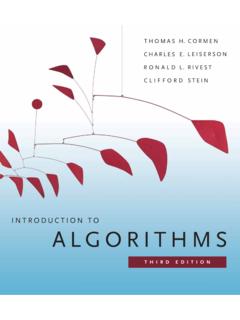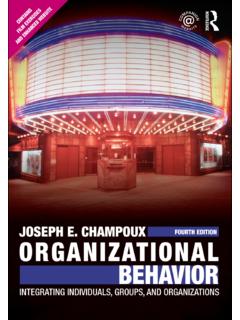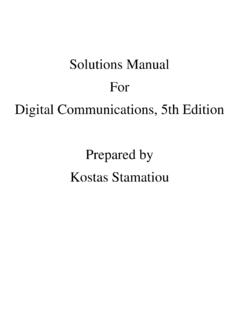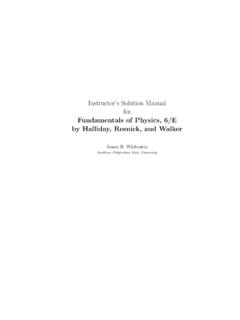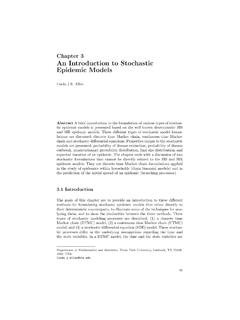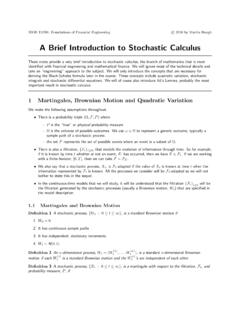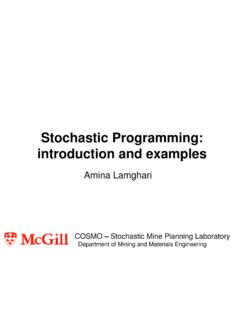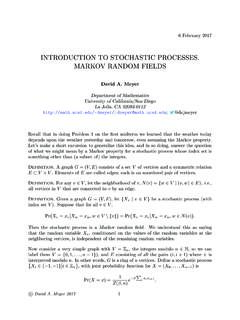Transcription of Introduction to Probability Models - صندوق بیان
1 Introduction to Probability ModelsTenth EditionThis page intentionally left blankIntroduction to ProbabilityModelsTenth EditionSheldon M. RossUniversity of Southern CaliforniaLos Angeles, CaliforniaAMSTERDAM BOSTON HEIDELBERG LONDONNEW YORK OXFORD PARIS SAN DIEGOSAN FRANCISCO SINGAPORE SYDNEY TOKYOA cademic Press is an Imprint of ElsevierAcademic Press is an imprint of Elsevier30 Corporate Drive, Suite 400, Burlington, MA 01803, USA525 B Street, Suite 1900, San Diego, California 92101-4495, USAE lsevier, The Boulevard, Langford Lane, Kidlington, Oxford, OX5 1GB, UKCopyright 2010 Elsevier Inc. All rights part of this publication may be reproduced or transmitted in any form or by any means, electronic ormechanical, including photocopying, recording, or any information storage and retrieval system, withoutpermission in writing from the publisher.
2 Details on how to seek permission, further information about thePublisher s permissions policies and our arrangements with organizations such as the Copyright ClearanceCenter and the Copyright Licensing Agency, can be found at our book and the individual contributions contained in it are protected under copyright by the Publisher(other than as may be noted herein).NoticesKnowledge and best practice in this field are constantly changing. As new research and experience broadenour understanding, changes in research methods, professional practices, or medical treatment may and researchers must always rely on their own experience and knowledge in evaluating andusing any information, methods, compounds, or experiments described herein.
3 In using such informationor methods they should be mindful of their own safety and the safety of others, including parties for whomthey have a professional the fullest extent of the law, neither the Publisher nor the authors, contributors, or editors, assume anyliability for any injury and/or damage to persons or property as a matter of products liability, negligenceor otherwise, or from any use or operation of any methods, products, instructions, or ideas contained inthe material of Congress Cataloging-in-Publication DataRoss, Sheldon to Probability Models / Sheldon M. Ross. 10th bibliographical references and 978-0-12-375686-2 (hardcover : alk.)
4 Paper) 1. Probabilities. I. dc222009040399 British Library Cataloguing-in-Publication DataA catalogue record for this book is available from the British : 978-0-12-375686-2 For information on all Academic Press publicationsvisit our Web site by: diacriTech, IndiaPrinted in the United States of America091011 987654321 ContentsPrefacexi1 Introduction to Probability Sample Space and Probabilities Defined on Conditional Independent Bayes Formula12 Exercises15 References202 Random Random Discrete Random The Bernoulli Random The Binomial Random The Geometric Random The Poisson Random Continuous Random The Uniform Random Exponential Random Gamma Random Normal Random Expectation of a Random The Discrete The Continuous Expectation of a Function of a Random Jointly Distributed Random Joint Distribution
5 Independent Random Covariance and Variance of Sums of Random Variables Joint Probability Distribution of Functions of Moment Generating The Joint Distribution of the Sample Mean and SampleVariance from a Normal The Distribution of the Number of Events that Limit stochastic Processes84 Exercises86 References953 Conditional Probability and Conditional The Discrete The Continuous Computing Expectations by Computing Variances by Computing Probabilities by Some A List A Random Uniform Priors, Polya s Urn model , and Bose Mean Time for Thek-Record Values of Discrete Random Variables Left Skip Free Random An Identity for Compound Random Poisson Compounding Binomial Compounding A Compounding Distribution Related to the NegativeBinomial172 Exercises1734 Markov Chapman Kolmogorov Classification of Limiting Some The Gambler s Ruin A model for Algorithmic Using a Random Walk to Analyze a ProbabilisticAlgorithm for the Satisfiability Mean Time Spent in Transient Branching Time Reversible Markov Markov Chain Monte Carlo Markov Decision Hidden Markov Predicting the
6 States273 Exercises275 References2905 The Exponential Distribution and the Poisson The Exponential Properties of the Exponential Further Properties of the Exponential Convolutions of Exponential Random The Poisson Counting Definition of the Poisson Interarrival and Waiting Time Further Properties of Poisson Conditional Distribution of the Arrival Estimating Software Generalizations of the Poisson Nonhomogeneous Poisson Compound Poisson Conditional or Mixed Poisson Processes351 Exercises354 References3706 Continuous-Time Markov Continuous-Time Markov Birth and Death The Transition Probability FunctionPij(t) Limiting Time Computing the Transition Probabilities409 Exercises412 References4197 Renewal Theory and Its Distribution ofN(t)
7 Limit Theorems and Their Renewal Reward Regenerative Alternating Renewal Semi-Markov The Inspection Computing the Renewal Applications to Patterns of Discrete Random The Expected Time to a Maximal Run ofDistinct Increasing Runs of Continuous Random The Insurance Ruin Problem478 Exercises484 References4958 Queueing Cost Steady-State Exponential A Single-Server Exponential Queueing A Single-Server Exponential Queueing System HavingFinite Birth and Death Queueing A Shoe Shine A Queueing System with Bulk Network of Open Closed The SystemM/ Preliminaries.
8 Work and Another Cost Application of Work toM/ Busy Variations on theM/ TheM/G/1 with Random-Sized Batch Priority AnM/G/1 Optimization TheM/G/1 Queue with Server The ModelG/ TheG/M/1 Busy and Idle A Finite Source Multiserver Erlang s Loss TheM/ TheG/ TheM/G/kQueue567 Exercises568 References5789 Reliability Structure Minimal Path and Minimal Cut Reliability of Systems of Independent Bounds on the Reliability Method of Inclusion and Second Method for Obtaining Bounds onr(p) System Life as a Function of Component Expected System An Upper Bound on the Expected Life of aParallel Systems with A Series model with Suspended Animation620 Exercises623 References62910 Brownian Motion and Stationary Brownian Hitting Times, Maximum Variable.
9 And the Gambler sRuin Variations on Brownian Brownian Motion with Geometric Brownian Pricing Stock An Example in Options The Arbitrage The Black-Scholes Option Pricing White Gaussian Stationary and Weakly Stationary Harmonic Analysis of Weakly Stationary Processes659 Exercises661 References66511 General Techniques for Simulating Continuous The Inverse Transformation The Rejection The Hazard Rate Special Techniques for Simulating Continuous The Normal The Gamma The Chi-Squared The Beta(n,m) The Exponential Distribution The Von Simulating from Discrete The Alias stochastic Simulating a Nonhomogeneous Poisson Simulating a Two-Dimensional Poisson Variance Reduction Use of Antithetic Variance Reduction by Control Importance Determining the Number of Generating from the Stationary Distribution of aMarkov Coupling from the Another Approach725 Exercises726 References734 Appendix: Solutions to Starred Exercises735 Index775 PrefaceThis text is intended as an Introduction to elementary Probability theory andstochastic processes.
10 It is particularly well suited for those wanting to see howprobability theory can be applied to the study of phenomena in fields such as engi-neering, computer science, management science, the physical and social sciences,and operations is generally felt that there are two approaches to the study of Probability the-ory. One approach is heuristic and nonrigorous and attempts to develop in thestudent an intuitive feel for the subject that enables him or her to think proba-bilistically. The other approach attempts a rigorous development of probabilityby using the tools of measure theory. It is the first approach that is employedin this text.
